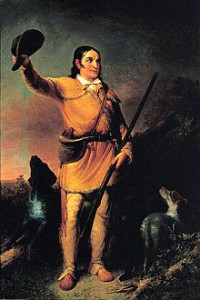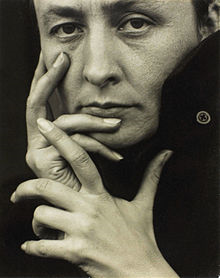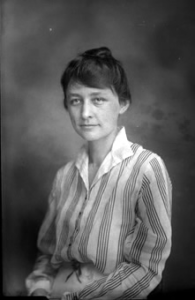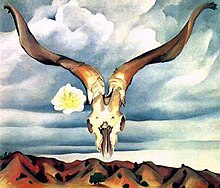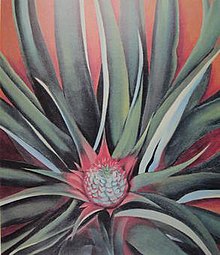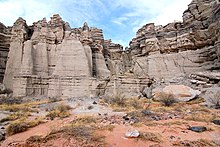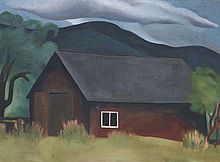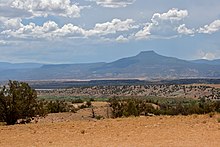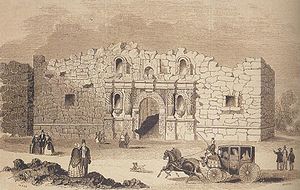 On this day in 1836, following a 13-day seige, Mexican troops under President General Antonio López de Santa Anna launched a final assault on the Alamo Mission near San Antonio de Béxar (modern-day San Antonio, Texas) killing all but two of the Texian defenders. The Battle of the Alamo was a pivotal event in the Texas Revolution. The Texians under General Sam Houston later defeated Santa Anna and the Mexican Army at the Battle of San Jacinto on 21 April 1836. The Texians’ battle cry that day was “Remember the Alamo” and “Remember Goliad.” The story has been made into two major motion pictures; The Alamo (1960) directed by John Wayne and The Alamo (2004) directed by John Lee Hancock. Among those killed at the Alamo;
On this day in 1836, following a 13-day seige, Mexican troops under President General Antonio López de Santa Anna launched a final assault on the Alamo Mission near San Antonio de Béxar (modern-day San Antonio, Texas) killing all but two of the Texian defenders. The Battle of the Alamo was a pivotal event in the Texas Revolution. The Texians under General Sam Houston later defeated Santa Anna and the Mexican Army at the Battle of San Jacinto on 21 April 1836. The Texians’ battle cry that day was “Remember the Alamo” and “Remember Goliad.” The story has been made into two major motion pictures; The Alamo (1960) directed by John Wayne and The Alamo (2004) directed by John Lee Hancock. Among those killed at the Alamo;
-
Davy Crockett – folk hero, frontiersman, soldier, politician, “King of the Wild Frontier”. Born David Crockett on 17 August 1786 in Greene County, Tennessee. Crockett represented Tennessee in the U. S. House of Representatives. When he was narrowly defeated for re-election he said; “I told the people of my district that I would serve them as faithfully as I had done; but if not … you may all go to hell, and I will go to Texas.” Crockett married twice; Polly Finley (1806 – 1815 her death) and Elizabeth Patton (1815 – 1836 his death). Crockett was 49 at the time of his death. Crockett was portrayed in the Alamo films by Wayne and Billy Bob Thornton.
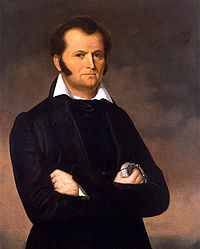 James “Jim” Bowie – pioneer, Texas Ranger and soldier. Born on 10 April 1796 in Logan County, Kentucky. He popularized the Bowie knife. Bowie was 39 at the time of his death. Bowie, Texas and Bowie County are named in his honor. Bowie was portrayed in the Alamo movies by Richard Widmark and Jason Patric.
James “Jim” Bowie – pioneer, Texas Ranger and soldier. Born on 10 April 1796 in Logan County, Kentucky. He popularized the Bowie knife. Bowie was 39 at the time of his death. Bowie, Texas and Bowie County are named in his honor. Bowie was portrayed in the Alamo movies by Richard Widmark and Jason Patric.
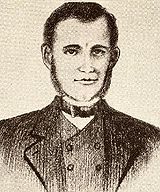 William Barret Travis – lawyer and soldier. Born 9 August 1809 in Saluda County, South Carolina. Travis married once, Rosanno Cato (1828 – 1836 divorce). Travis was 26 years old when he died. Travis was portayed in the Alamo movies by Laurence Harvey and Patrick Wilson. On 24 February 1836, during the siege, Travis wrote the now famous letter addressed “To the People of Texas and All Americans in the World”:
William Barret Travis – lawyer and soldier. Born 9 August 1809 in Saluda County, South Carolina. Travis married once, Rosanno Cato (1828 – 1836 divorce). Travis was 26 years old when he died. Travis was portayed in the Alamo movies by Laurence Harvey and Patrick Wilson. On 24 February 1836, during the siege, Travis wrote the now famous letter addressed “To the People of Texas and All Americans in the World”:
- Fellow citizens and compatriots;
- I am besieged, by a thousand or more of the Mexicans under Santa Anna. I have sustained a continual Bombardment and cannonade for 24 hours and have not lost a man. The enemy has demanded a surrender at discretion, otherwise, the garrison are to be put to the sword, if the fort is taken. I have answered the demand with a cannon shot, and our flag still waves proudly from the walls. I shall never surrender or retreat. Then, I call on you in the name of Liberty, of patriotism & everything dear to the American character, to come to our aid, with all dispatch. The enemy is receiving reinforcements daily and will no doubt increase to three or four thousand in four or five days. If this call is neglected, I am determined to sustain myself as long as possible and die like a soldier who never forgets what is due to his own honor & that of his country. Victory or Death.
- William Barret Travis
- Lt. Col. Comdt.
- P.S. The Lord is on our side. When the enemy appeared in sight we had not three bushels of corn. We have since found in deserted houses 80 or 90 bushels and got into the walls 20 or 30 head of Beeves.Travis
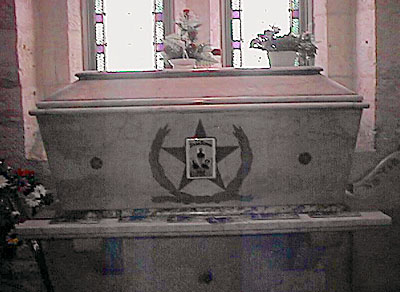 The Final Footprint – the bodies of the Texians including Crockett, Bowie and Travis were stacked and burned. Juan Seguín returned to Béxar in February 1837 to examine the remains and found ashes from the funeral pyres. He had the ashes placed in a simple coffin inscribed with the names Crockett, Bowie and Travis. According to a 28 March 1837 article in the Telegraph and Texas Register, Seguín buried the coffin under a peach tree grove. The spot was not marked and cannot now be identified. However, Seguín later claimed that he had placed the coffin in front of the altar at the San Fernando Cathedral in San Antonio. Remember the Alamo!
The Final Footprint – the bodies of the Texians including Crockett, Bowie and Travis were stacked and burned. Juan Seguín returned to Béxar in February 1837 to examine the remains and found ashes from the funeral pyres. He had the ashes placed in a simple coffin inscribed with the names Crockett, Bowie and Travis. According to a 28 March 1837 article in the Telegraph and Texas Register, Seguín buried the coffin under a peach tree grove. The spot was not marked and cannot now be identified. However, Seguín later claimed that he had placed the coffin in front of the altar at the San Fernando Cathedral in San Antonio. Remember the Alamo!
#RIP #OTD in 1888 novelist, short story writer, poet perhaps best known as the author of the novel Little Women, Louisa May Alcott died of a stroke in Boston, aged 55. Sleepy Hollow Cemetery in Concord, Mass. near Emerson, Hawthorne, & Thoreau, on a hillside now known as “Authors’ Ridge”
#RIP #OTD in 1973 writer and novelist (The Good Earth) Pearl S. Buck died of lung cancer in Danby, Vermont aged 80. Green Hills Farm in Perkasie, Pennsylvania
On this day in 1986, artist Georgia O’Keeffe died in Santa Fe, New Mexico at the age of 98. Born Georgia Totto O’Keeffe on November 15, 1887 in Town of Sun Prairie, Wisconsin. Perhaps best known for her paintings of enlarged flowers, New York skyscrapers, New Mexico landscapes, and the stunning photographs taken of her by Alfred Stieglitz. In my opinion, O’Keeffe is the “Mother of American modernism”.
In 1905, O’Keeffe began her serious formal art training at the School of the Art Institute of Chicago and then the Art Students League of New York, but she felt constrained by her lessons that focused on recreating or copying what was in nature. In 1908, unable to fund further education, she worked for two years as a commercial illustrator, and then spent seven years between 1911 and 1918 teaching in Virginia, Texas, and South Carolina. During that time, she studied art during the summers between 1912 and 1914 and was introduced to the principles and philosophies of Arthur Wesley Dow, who espoused created works of art based upon personal style, design, and interpretation of subjects, rather than trying to copy or represent them. This caused a major change in the way she felt about and approached art, as seen in the beginning stages of her watercolors from her studies at the University of Virginia and more dramatically in the charcoal drawings that she produced in 1915 that led to total abstraction. Alfred Stieglitz, an art dealer and photographer, held an exhibit of her works in 1916. Over the next couple of years, she taught and continued her studies at the Teachers College, Columbia University in 1914 and 1915.
She moved to New York in 1918 at Stieglitz’s request and began working seriously as an artist. They developed a professional relationship—he promoted and exhibited her works—and a personal relationship that led to their marriage in 1924. O’Keeffe created many forms of abstract art, including close-ups of flowers, such as the Red Canna paintings, that many found to represent women’s genitalia, although O’Keeffe consistently denied that intention. The reputation of the portrayal of women’s sexuality was also fueled by explicit and sensuous photographs that Stieglitz had taken and exhibited of O’Keeffe.
O’Keeffe and Stieglitz lived together in New York until 1929, when O’Keeffe began spending part of the year in the Southwest, which served as inspiration for her paintings of New Mexico landscapes and images of animal skulls, such as Cow’s Skull: Red, White, and Blue and Ram’s Head White Hollyhock and Little Hills. After Stieglitz’s death, she lived permanently in New Mexico at Georgia O’Keeffe Home and Studio in Abiquiú, until the last years of her life when she lived in Santa Fe.
In June 1918, O’Keeffe accepted Stieglitz’s invitation to move to New York and accept his financial support. Stieglitz, who was married, moved in with her in July.
In February 1921, Stieglitz’s photographs of O’Keeffe were included in a retrospective exhibition at the Anderson Galleries. Stieglitz started photographing O’Keeffe when she visited him in New York City to see her 1917 exhibition, and continued taking photographs, many of which were in the nude. It created a public sensation. When he retired from photography in 1937, he had made more than 350 portraits of her. In 1978, she wrote about how distant from them she had become, “When I look over the photographs Stieglitz took of me—some of them more than sixty years ago—I wonder who that person is. It is as if in my one life I have lived many lives.”
In 1924, Stieglitz was divorced from his wife Emmeline, and he married O’Keeffe. For the rest of their lives together, their relationship was, “a collusion… a system of deals and trade-offs, tacitly agreed to and carried out, for the most part, without the exchange of a word. Preferring avoidance to confrontation on most issues, O’Keeffe was the principal agent of collusion in their union,” according to biographer Benita Eisler.
They primarily lived in New York City, but spent their summers at his family home, Oaklawn, in Lake George in upstate New York.
In 1928, Stieglitz had an affair with Dorothy Norman. O’Keeffe began to spend the summers painting in New Mexico in 1929.
In August 1934, she visited Ghost Ranch, north of Abiquiú, for the first time and decided to live there; in 1940, she moved into a house on the ranch property. The varicolored cliffs of Ghost Ranch inspired some of her most famous landscapes. In 1977, O’Keeffe wrote: “[the] cliffs over there are almost painted for you—you think—until you try to paint them.” Among guests to visit her at the ranch over the years were Charles and Anne Lindbergh, singer-songwriter Joni Mitchell, poet Allen Ginsberg, and photographer Ansel Adams.
Stieglitz died on July 13, 1946. She buried his ashes at Lake George. She spent the next three years mostly in New York settling his estate, and moved permanently to New Mexico in 1949, spending time at both Ghost Ranch and the Abiquiú house that she made into her studio.
Gallery
The Final Footprint
Her body was cremated and her cremains were scattered, as she wished, on the land around Ghost Ranch.
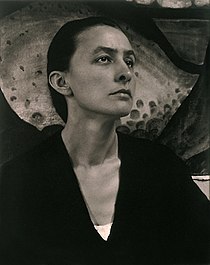 |
|
The Georgia O’Keeffe Museum opened in Santa Fe in 1997. The assets included a large body of her work, photographs, archival materials, and her Abiquiú house, library, and property. The Georgia O’Keeffe Home and Studio in Abiquiú was designated a National Historic Landmark in 1998 and is now owned by the Georgia O’Keeffe Museum.
In 1991, the PBS aired the American Playhouse production A Marriage: Georgia O’Keeffe and Alfred Stieglitz, starring Jane Alexander as O’Keeffe and Christopher Plummer as Alfred Stieglitz.
#RIP #OTD 2013 Canadian country and folk singer-songwriter (“Sudbury Saturday Night”, “Bud the Spud”, “The Hockey Song”) Stompin’ Tom Connors died of kidney failure at his home in Ballinafad, Ontario, aged 77. Erin Union Cemetery in Erin, Ontario
RIP #OTD in 2017 film historian, television presenter, author, actor, primary host for more than 20 years of Turner Classic Movies (TCM), Robert Osborne died at his Manhattan apartment, The Osborne, aged 84. Body donated to Borough of Manhattan Community College
Have you planned yours yet?
Follow TFF on twitter @RIPTFF

